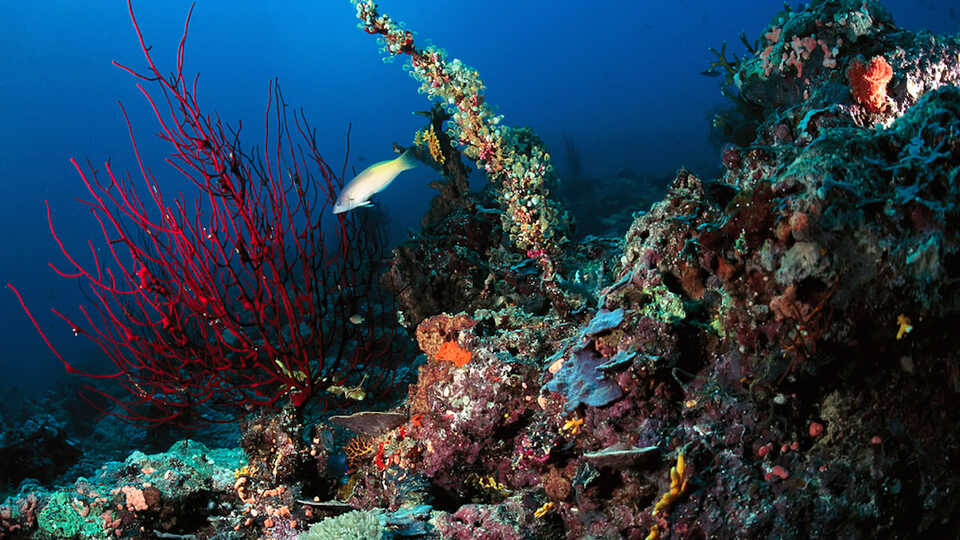Science News
Bright Spots in Coral Ecosystems

Coral reef ecosystems are in trouble. And these habitats—which cover less than 1 percent of the oceans, but are home to a quarter of the life in the oceans—are vitally important for the global economy (fisheries and tourism) in addition to protecting coastal regions against storms.
So a large team of scientists decided to take a look at where these ecosystems are thriving and where they’re not. The team decided to use a practice known as bright spot analysis, which focuses on outliers—deviations from expected conditions, both for better (bright spots) and for worse (dark spots). Bright spot analysis has been used in fields such as human health, business, and development to understand successes and failures, so why not use it for coral reef conservation?
The researchers compiled data from 2,514 coral reefs in 46 different locations, correlating fish biomass to 18 socioeconomic drivers and environmental conditions and identified 15 bright spots and 35 dark spots. The results were quite surprising.
“Our bright spots approach has identified places we did not previously know were so successful, and the really interesting thing is that they are not necessarily untouched by man,” Nick Graham of Lancaster University says. His colleague, Josh Cinner of James Cook University, elaborates. “These bright spots are reefs with more fish than expected based on their exposure to pressures like human population, poverty, and unfavorable environmental conditions,” he says.
“Importantly,” Graham says, “the bright spots had a few things in common, which, if applied to other places, might help promote better reef conditions.” Socioeconomically, bright spots vary in level of affluence, “showing that lessons about effective reef management can emerge from diverse places,” the team writes in their study, published today in Nature. Community, on the other hand, seems to be an important factor in bright spots.
“Many bright spots had strong local involvement in how the reefs were managed, local ownership rights, and traditional management practices,” says co-author Christina Hicks of Lancaster and Stanford University.
Shared environmental factors also appear important, such as reefs’ proximity to deepwater mesophotic regions known as twilight zone reefs. These deeper reefs may serve as a refuge for corals and the fish that frequent them, providing cooler, less human-disturbed waters. (These submerged ecosystems are also the subject of the Academy’s newest exhibit, Twilight Zone: Deep Reefs Revealed.) Marine protected areas (MPAs) also seemed to be effective in these bright spots, “but only when compliance is high,” the team writes, “reinforcing the importance of fostering compliance for reserves to be successful.”
Not surprisingly, the dark spots had similarities, as well. “Dark spots also had a few defining characteristics; they were subject to intensive netting activities and there was easy access to freezers so people could stockpile fish to send to the market,” says Hicks. Counter-intuitively, they were often found in some of the most remote areas, often thought to be in almost pristine conditions.
Now to take these results to the next level…. “We believe [these bright spots’] discovery offers the potential to develop exciting new solutions for coral reef conservation,” says Graham. That means expanding the current focus of conservation efforts where corals are under minimal threat to places where people and nature coexist. “Specifically, investments that foster local involvement and provide people with ownership rights can allow people to develop creative solutions that help defy expectations of reef fisheries depletion,” says Cinner. “Conversely, dark spots may highlight development or management pathways to avoid.”
Image: Anderson Smith2010/Flickr